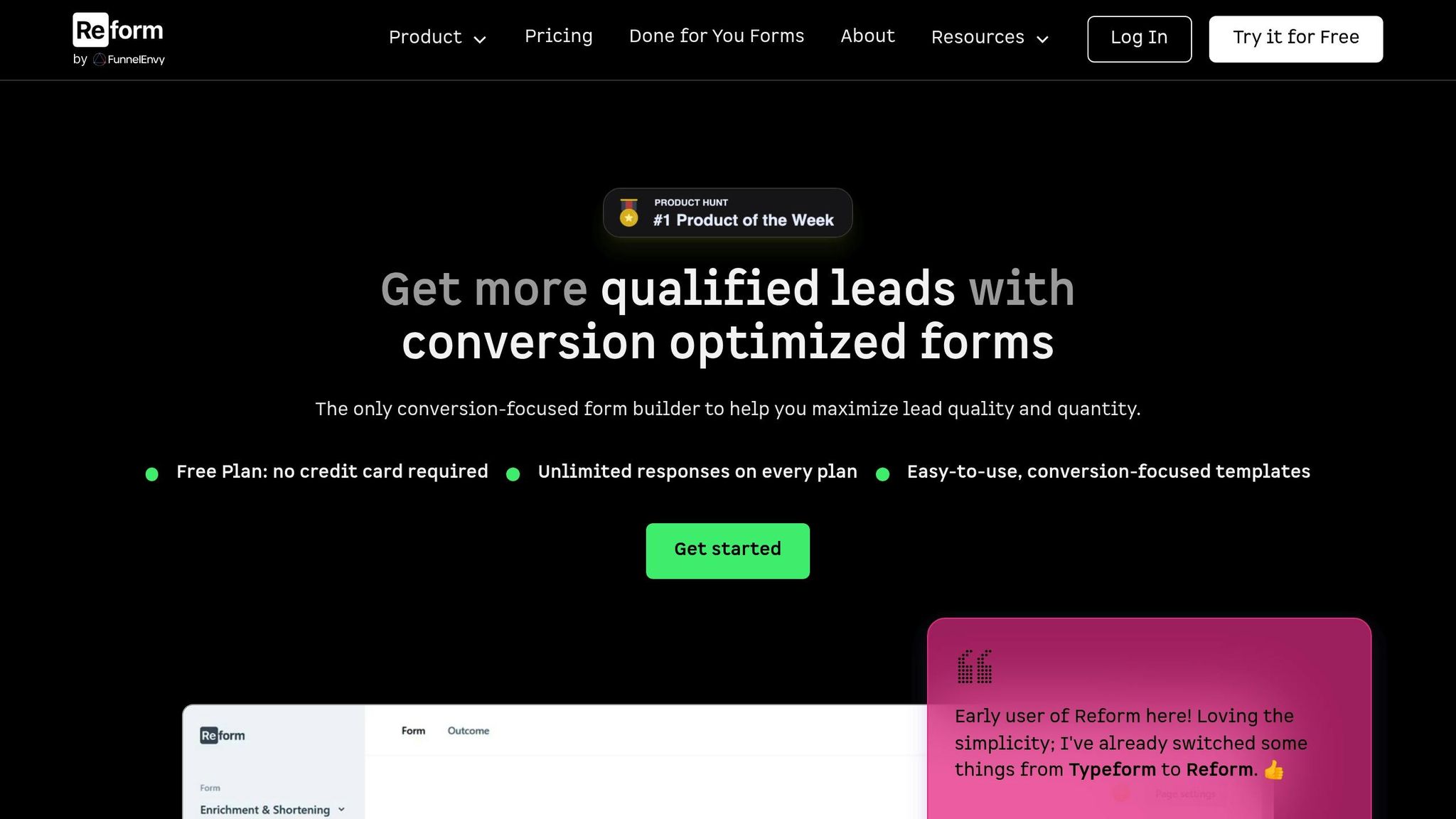New SCCs: What Businesses Need To Know

The European Union's updated Standard Contractual Clauses (SCCs), effective since June 2021, are mandatory for international data transfers under GDPR. U.S. businesses had to comply by December 27, 2022, to avoid penalties of up to 4% of global revenue. These changes directly impact companies handling EU personal data, such as SaaS providers, e-commerce platforms, and marketing firms. Key updates include:
- Modular Structure: Four modules tailored to different data transfer scenarios (Controller-to-Controller, Controller-to-Processor, Processor-to-Processor, Processor-to-Controller).
- Compliance Requirements: Businesses must revise contracts, conduct transfer impact assessments, and document all data transfers.
- Challenges: Updating vendor agreements, managing increased administrative tasks, and addressing cloud service complexities.
To comply, focus on standardizing contract updates, using tools to streamline workflows, and maintaining organized, detailed records. Staying informed about potential SCC updates is crucial as regulations evolve.
Standard Contractual Clauses (SCC) - What Are They? - Data Transfers
What Changed in the New SCCs
The updated Standard Contractual Clauses (SCCs) now follow a modular structure tailored to different types of data transfer scenarios. This new approach introduces four distinct modules, each specifying the roles and responsibilities of the parties involved in international data transfers.
The 4 Modules Explained
Here’s how the four modules are structured:
-
Module 1: Controller-to-Controller Transfers
Designed for cases where independent controllers share the responsibility for determining how data is processed. -
Module 2: Controller-to-Processor Transfers
Applies when a controller transfers data to a processor for specific processing tasks. -
Module 3: Processor-to-Processor Transfers
Relevant when a processor needs to transfer data to another processor or sub-processor. -
Module 4: Processor-to-Controller Transfers
Used when a processor sends data back to a controller.
Each module ensures clarity and alignment with the specific roles and obligations of the parties involved in these transfers.
Compliance Challenges for US Businesses
The updated SCC requirements bring a host of challenges for US companies managing international data transfers. While the modular structure of the new SCCs provides some guidance, the process of implementing these changes demands extensive time, resources, and collaboration across various departments. These hurdles go beyond regulatory updates, influencing contracts, administrative tasks, and technical operations.
Updating Current Contracts
US businesses now face the task of reviewing and revising contracts with international partners to align with the modular structure of the new SCCs. This means identifying the appropriate module for each agreement and clearly defining the responsibilities of all parties involved.
For multinational corporations with large vendor networks, this process becomes even more complicated. Legal teams must work closely with procurement, IT, and compliance departments to pinpoint contracts tied to cross-border data transfers. In many cases, companies may discover previously undocumented data transfer relationships, adding to the complexity.
Renegotiating contracts can take months, particularly when international partners interpret the requirements differently or seek changes to the proposed terms. Some vendors may resist taking on additional liability under the new SCCs, leading to extended negotiations or even forcing businesses to explore alternative services.
Increased Administrative Workload
The administrative demands tied to SCC compliance go well beyond updating contracts. Businesses are now required to maintain detailed documentation for every international data transfer. This includes records like transfer impact assessments, data mapping, and ongoing monitoring reports.
Keeping up with these documentation requirements significantly increases the compliance workload. Many companies will need to hire additional staff or invest in specialized software to manage the process. On top of that, these records must be regularly reviewed and updated to reflect changes in business relationships and data flows.
Record-keeping responsibilities also cover incident reporting and breach notifications, which now come with tighter deadlines and more detailed reporting requirements. Companies must establish strong internal processes to meet these obligations without disrupting day-to-day operations.
And it doesn’t stop there - technological hurdles add another layer of complexity to compliance efforts.
Cloud and IT Service Challenges
Cloud-based services present some of the toughest SCC compliance issues for US businesses. Many cloud providers operate global networks, which means data can move across multiple jurisdictions without the customer’s direct knowledge or control.
To address this, SaaS providers must improve transparency and offer more control to their customers. US businesses relying on these services need to work closely with providers to understand exactly where their data is processed and stored, ensuring the proper SCCs are in place for each location.
Things get even trickier in multi-cloud setups and integrated software environments. A single business application might involve data transfers through multiple cloud providers, each requiring its own SCC agreements and compliance checks.
IT departments will need to implement technical measures to support SCC compliance, such as stronger data encryption, tighter access controls, and advanced monitoring systems. These upgrades often require significant investment in infrastructure and may impact system performance or functionality. Additionally, companies may find themselves renegotiating or replacing IT contracts that don’t offer the flexibility needed to meet the new requirements.
sbb-itb-5f36581
How to Adapt to the New SCCs
With the challenges of the new SCCs laid out, businesses must now focus on actionable steps to ensure compliance. Meeting these requirements isn't just about ticking boxes - it's about creating efficient processes, using the right tools, and maintaining thorough documentation. While the transition may seem daunting, prioritizing three key areas can help simplify the journey.
Simplifying Contract Updates
Updating contracts to meet the new SCCs can feel overwhelming, especially if you're handling them one by one. The solution? Standardize the process to make bulk updates more efficient.
Start by grouping your international partnerships based on the four SCC modules. By categorizing similar relationships, you can streamline the process with standardized contract language, saving time and ensuring consistency across your vendors.
Assemble an integrated team with representatives from legal, procurement, IT, and compliance. This team should meet regularly - weekly, if possible - during the transition to tackle contract negotiations, address disputes, and make decisions about vendors that don’t align with the new requirements. Having all key players involved from the outset minimizes delays caused by back-and-forth approvals.
Set clear priorities and timelines for your updates. Focus first on high-risk data transfers, such as those involving sensitive personal information or regions with strict government access laws. Once those are addressed, move on to high-volume transfers that impact daily operations. This phased approach ensures that critical compliance gaps are resolved first, even if the overall process takes time.
Once your contract workflows are in motion, it’s time to optimize compliance processes with the right tools.
Streamlining Compliance Workflows with Reform

Managing SCC compliance means juggling vast amounts of information from various stakeholders. Tools like Reform’s no-code form builder can simplify this process, making data collection smoother and less error-prone.
For example, use multi-step forms to conduct Transfer Impact Assessments. These forms can break down the assessment into manageable sections, guiding users through each step without overwhelming them with lengthy questionnaires. This approach ensures that all necessary details - such as data types, usage purposes, and security measures - are captured efficiently.
Conditional routing can further customize the experience. For instance, if a vendor handles employee data, the form can automatically request additional details about HR-related security protocols. If they deal with payment data, it can redirect to PCI compliance questions. Real-time analytics can track vendor progress, ensuring nothing falls through the cracks.
Lead enrichment features can also be a game-changer. Reform can auto-fill known vendor details - like company names and contact information - so respondents can focus solely on compliance-specific questions. This not only reduces the workload for vendors but also improves data accuracy.
While tools like these simplify workflows, maintaining thorough and organized records remains a cornerstone of compliance.
Maintaining Comprehensive Records
The new SCCs require businesses to go beyond simply storing contracts. You’ll need to document every aspect of compliance, from Transfer Impact Assessments to ongoing monitoring and incident logs.
Instead of organizing files by individual contracts, structure them around data transfer relationships. Each relationship should have its own file that includes the relevant SCC module, completed assessments, monitoring reports, and any correspondence about compliance issues. This setup makes it easier to respond to audits or regulatory inquiries.
Set up regular review cycles for your documentation. For high-risk transfers, quarterly reviews are ideal, while annual reviews may suffice for standard relationships. During these reviews, confirm that Transfer Impact Assessments still reflect current conditions, check for new government access laws, and evaluate whether existing security measures remain adequate.
Use standardized templates for all compliance-related activities. Templates for assessments, incident reports, vendor evaluations, and monitoring logs ensure consistency and make it easier to train staff on compliance procedures.
Finally, implement backup and retention policies that align with regulatory requirements. Ensure your documentation is stored securely and can be retrieved quickly for inspections. Consider both digital and physical storage, as some regulators may request hard copies during audits. Reliable backup systems are essential to avoid any loss of critical compliance records.
What's Next: Future SCC Changes
Data transfer regulations continue to shift, and businesses are still working to meet the latest SCC requirements. However, regulators are already considering updates to address the ever-changing landscape of data processing and modern business operations.
Potential SCC Updates on the Horizon
Regulators are actively examining the SCC framework to better align it with advancements in data processing, cloud technology, and the way businesses share information. While no specific timeline or details have been released, ongoing discussions hint at possible adjustments in the near future. This signals the importance of staying ahead with a forward-thinking compliance approach.
Staying Informed and Ready
To prepare for these potential changes, businesses should make it a priority to stay informed. Regularly check for regulatory updates, seek advice from legal experts, and engage with industry associations to remain in the loop. Keeping compliance processes flexible and maintaining accurate records will ensure your organization can adapt quickly to any new requirements.
FAQs
What steps should U.S. businesses take to comply with the new SCC requirements?
To align with the updated Standard Contractual Clauses (SCCs), U.S. businesses should focus on these key steps:
- Map out data transfers: Pinpoint all instances of cross-border data movement, especially those involving personal information subject to SCC regulations.
- Assess potential risks: Conduct Transfer Impact Assessments (TIAs) to identify and evaluate any risks tied to international data transfers.
- Update contracts with new SCCs: Transition to the latest SCC templates, ensuring contracts are updated to meet current regulatory requirements.
- Establish safeguards and keep records: Put measures in place to mitigate risks and maintain thorough documentation of compliance actions.
These steps should be completed before the compliance deadlines in 2025 to avoid penalties and ensure business operations remain uninterrupted.
What steps can businesses take to handle the added administrative workload from the updated SCCs?
To handle the added administrative tasks brought on by the updated SCCs, businesses can benefit from adopting compliance tools designed to simplify documentation, tracking, and monitoring. These tools can cut down on manual work, saving time and boosting efficiency.
On top of that, relying on practical checklists and official guidance from regulatory authorities can help ensure every requirement is met correctly. Staying organized and ahead of deadlines allows companies to manage compliance without overburdening their teams.
How can businesses navigate the challenges of using cloud-based services under the new SCC requirements?
To align with the updated SCC requirements, businesses should begin by carrying out detailed cloud risk assessments. These assessments are essential for spotting potential weak points and ensuring adherence to the stricter rules surrounding data transfers. This step is critical for identifying areas that might need extra protective measures.
On top of that, adopting a multi-cloud strategy focused on data sovereignty can help minimize legal and political risks associated with international data movement. By using multiple cloud service providers and embedding strong compliance practices, companies can stay ahead of regulatory changes while safeguarding their sensitive data.
Related posts
Get new content delivered straight to your inbox

The Response
Updates on the Reform platform, insights on optimizing conversion rates, and tips to craft forms that convert.
Drive real results with form optimizations
Tested across hundreds of experiments, our strategies deliver a 215% lift in qualified leads for B2B and SaaS companies.





